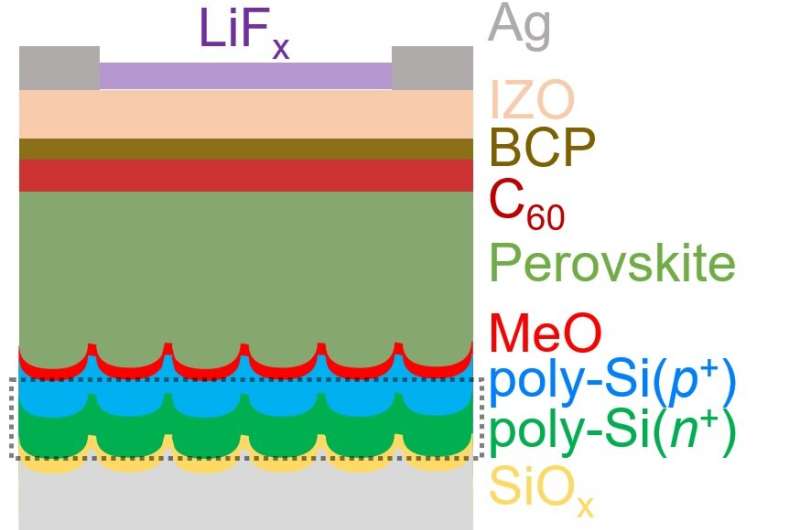This article has been reviewed according to Science X's editorial process and policies. Editors have highlighted the following attributes while ensuring the content's credibility:
fact-checked
peer-reviewed publication
trusted source
proofread
Tunneling recombination layer boosts efficiency of tandem solar cells

Prof. Ye Jichun's team from the Ningbo Institute of Materials Technology and Engineering (NIMTE) of the Chinese Academy of Sciences (CAS), along with researchers from Soochow University, have developed a polycrystalline silicon tunneling recombination layer for perovskite/tunnel oxide passivating contact (TOPCon) silicon tandem solar cells (TSCs), which has achieved excellent efficiency and high stability.
The study was published in Nature Energy.
Due to their theoretically ultra-high efficiency and cost advantages, perovskite/silicon TSCs enjoy promising prospects in the photovoltaic industry and have attracted considerable attention. Previous efforts to increase device efficiency have mainly focused on improving the top sub-cell, leaving much room for improvement.
The recombination layer, which serves as the electrical contact between the top and bottom sub-cells, plays a critical role in further efficiency progress.
In this study, the researchers developed a polycrystalline silicon (poly-Si) tunneling recombination layer that was incorporated into a perovskite/TOPCon silicon tandem cell. Through a two-step annealing strategy, the diffusion of boron and phosphorus dopants could be effectively restrained, endowing the device with excellent passivation and contact performance.
Compared with the conventional transparent conductive oxide layer, this novel tunneling recombination layer exhibits stronger adsorption on poly-Si(p+) substrates and more efficient charge–carrier transport and extraction for the upper perovskite sub-cells.
This newly developed tandem device has achieved a remarkable photoelectric conversion efficiency of 29.2%, which is one of the highest values reported to date for perovskite/TOPCon TSCs. In addition, the device can retain 85% of its initial efficiency after 500 hours of continuous maximum power point tracking, indicating high stability.
According to the researchers, finite element simulations provided further insight into the carrier transport and tunneling mechanisms. Moreover, relevant analyses revealed that the doping concentration of poly-Si affects the performance of perovskite/silicon TSCs.
This study may shed light on the further development and industrialization of high-efficiency perovskite/silicon TSCs and related tandem devices.
More information: Jingming Zheng et al, Polycrystalline silicon tunnelling recombination layers for high-efficiency perovskite/tunnel oxide passivating contact tandem solar cells, Nature Energy (2023). DOI: 10.1038/s41560-023-01382-w















